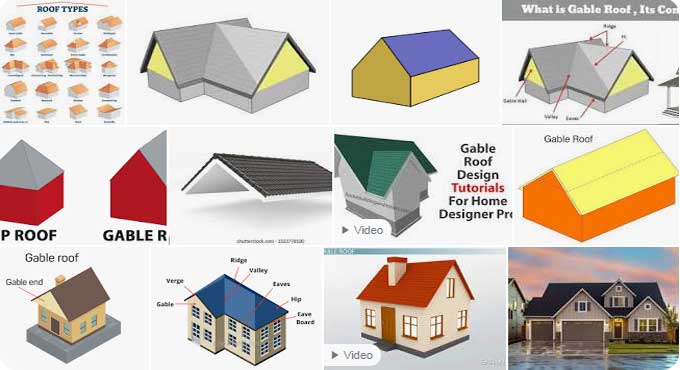
Gable Roof: Types, Benefits, Components

A ridge is made by connecting two pieces of a roof at their top horizontal edges to form a gable. Rafters, roof trusses, or purling are used to create the most common roof form in colder or more moderate climates.
Gable refers to the frequently triangular portion of a wall that is between the edges of intersecting roof pitches. The shape and amount of intricacy of the gable are determined by the structural system used, which takes the environment, the availability of materials, and aesthetic factors into account.
Some roofs don't have gable vents, and the gable roof, a popular type of gabled roof, gets its name from its pronounced gables. It is important to keep in mind that the size of these sides can vary depending on the location, and bigger residential constructions can have two or more gables to provide depth and stability.
Design of Gable Roof
Typically, on either side of the ridge of a gabled roof, there are two portions that slope downwards. The diagonal edges are arranged so that when they converge at the top point, the ridge of the roof is formed by the converging vertical edges.
As a result of the size of the land, the pitch and height of the gutters in a gable roof design may differ depending on their design. In a ridge board, the roof's peak is the highest point on the roof and it is parallel to the exterior walls.
The ridge board is attached to the top of the common rafters, and these rafters slanting downwards, and these rafters are attached to the exterior walls and the joists of the ceiling.
Components of Gable Roof
Although the gable roof concept is straightforward, there are several distinct parts. The portion of the wall that runs from the base of the eaves to the top of the ridge is known as the gables.
This type of roof takes its name from the gables, and here are a few components of Gable roofs:
Gable components
As the name suggests, the gable is a type of side wall of a house that makes up the roof's peak, and it has the shape of an A.
Eaves components
There are various types of eaves on a roof, but the one that is most commonly used is the one that extends over the outer walls of a house.
Rake components
Rake is the term used to describe the portion of a roof that extends beyond a gable end of a building.
Types of Gable Roofs
Here are a few types of gable roofs:-
Box-type gable
Each end of a box gable roof's roof section features a triangular extension. While this design closely resembles the traditional roof gable, it places more emphasis on the triangle.
Front-type gable
Many homes have the front door located right beneath the gable roof at the front of the house, just at the front of the house. While interest in Colonial-style homes is on the rise, this characteristic is common to most of the homes built in this style.
Cross-type gable
It is formed by two or more gable rooflines crossing one another at an angle; the two ridges are usually located perpendicular to one another in a cross-gable roof; normally, the two ridges cross one another at an angle.
This type of house usually has a more elaborate design due to the altered shape that will be caused by this type of roof on the structure of the house, which in turn will result in a more intricate design.
Gable with Shed-type
As part of expanding an existing roofing system, one of the most common steps is to add a shed roof on top of the ridge of the gable roof.
In addition to offering increased headroom and space, this hybrid style of roof offers an opportunity to increase a building's structure and aesthetics without completely changing the roof's structural qualities, which makes it a popular option for homeowners wishing to increase their property.
Benefits of Gable Roofs
Flow of water
The sloping design of a roof serves as a trustworthy water drainage system. Due to the slanted pitch, water and snow may easily roll down the top.
The chance of leaks is decreased by this roof feature, guaranteeing that the top may endure longer without being harmed.
Constructible
Compared to other roof options, these roofs are easy and quick to install, and they require only a few basic construction techniques, compared to other roof options.
Reasonable Choice
There are several advantages to using a roofing system, especially if you have limited resources.
To learn more, watch the following video tutorial.
Video Source: Sawdust and Wood
Due to the fact that gabled roofs are significantly simpler to build than other intricate roofing solutions, the cost of building and installing gabled roofs is, on the whole, lower than other roof construction methods.


